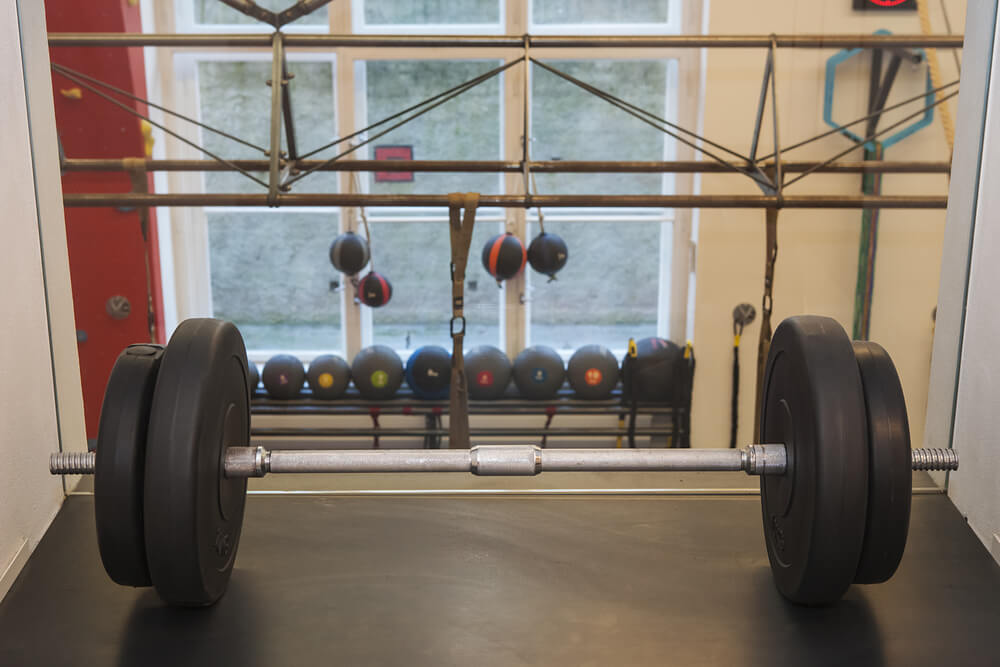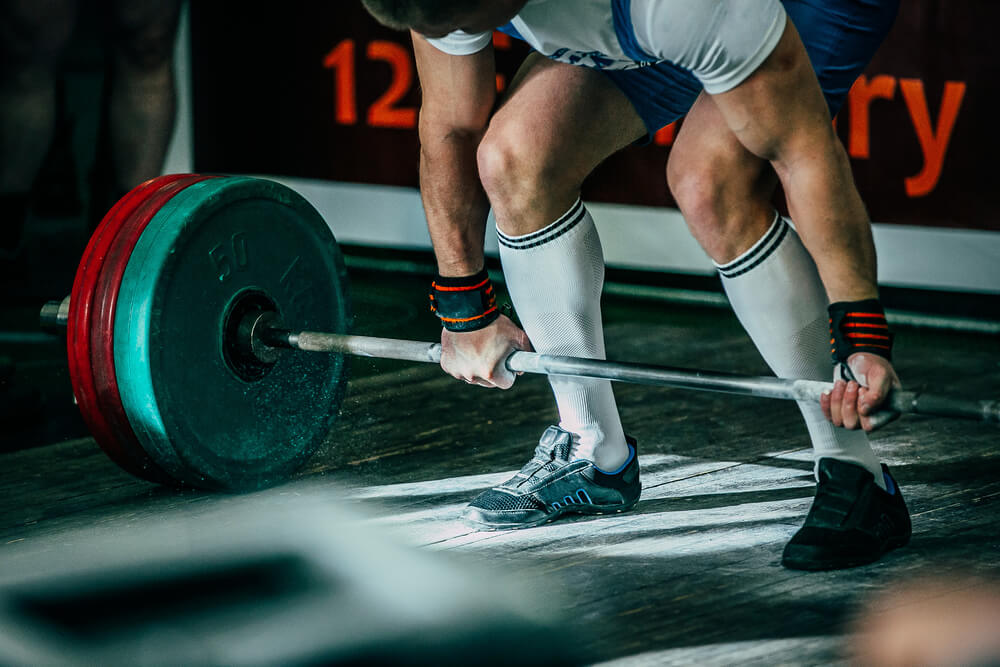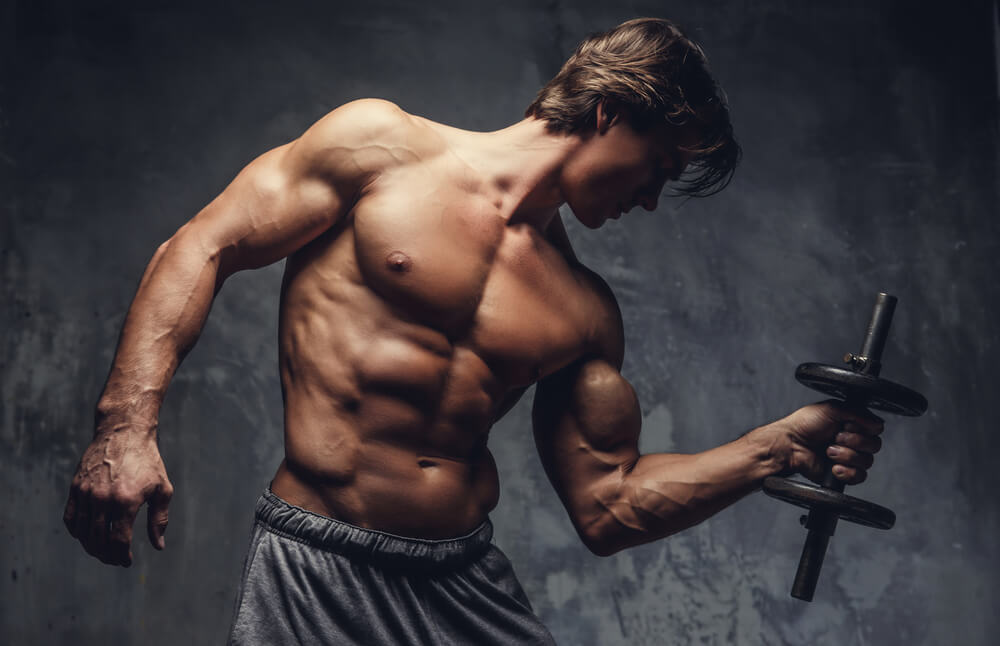
Building muscle is all good and fine, but if you really want to be strong, you have to learn a whole new training philosophy.
Here’s how to hit the gym like a powerlifter and see results in no time!
Powerlifting should be considered an art. Why? It takes precise timing and plenty of experience to move heavy loads like the pros do. Their training and diet are just as monitored as that of bodybuilders, but with different intentions of course.
You do not necessarily have to be training to become a pro powerlifter in order to use this type of training program. If you seek strength, power and answers on how to gain muscle mass, then a powerlifting program may be right for you.
Let’s take a look into what powerlifters commonly do for their strength training workouts and nutrition programs. You will come to find it is more for the advanced fitness enthusiast. Even still, you have to start somewhere.
We’ll help show you the way.
This Is What Sets a Powerlifter and Bodybuilder Apart
Most people don’t understand the difference. That’s why you often find people using the categories interchangeably. But, there is quite a difference between a powerlifter and a bodybuilder.
Bodybuilders focus on their physique and how it looks. They are strong and have low body fat percentages to allow better muscle definition. There’s only one way on how to measure body fat. And, they do so with good reason. They make sure they know how to lose fat and gain muscle.
After all, their competitions consist of flexing their muscles. They are judged on whose physique is better.
A person not competing is still focusing on the same concept. That would be low body fat percentages, lean muscle development and anything else revolving around making their bodies physically appealing.
Powerlifters are different.
Why?
They are not focused on how their physique looks unless it is their own personal goal to have a certain look. Their main focus is on doing one rep. And, that rep is heavy.
How heavy?
They lift a lot more than the average person would ever think to try. Powerlifters win if they can lift more than anybody else in their lift category and weight class.
People who are not competing are usually more concerned about super strength and moving heavy loads to increase the size of their muscles. Most people would have to enjoy doing exercises with heavier loads and longer rest breaks between sets.
Muscle definition is not really an issue. With that said, it may be a good plan to add in fasted cardio from time to time if you want better definition.
This Is The Powerlifter Diet
Powerlifters rely on doing low rep sets with heavy to super heavy load settings. This allows them to develop pure strength and power. The time used for each set is very short and requires a lot of energy.
Glycogen is stored glucose primarily found in your muscle cells and liver. It is received through carbs.
You will rarely see a powerlifter following a low-carb or no-carb diet. Those seeking to lose weight should not follow the same nutritional info that is used for a powerlifter’s goal.
Why?
They eat lots of calories that are received from all three macronutrients (protein, carbs and dietary fats).
The reasons are simple. It supports muscle repair, recovery and muscle growth. In other words, you need protein to put on muscle mass and to reduce muscle soreness as well. Every cell in your body needs protein. This macronutrient is essential for life to exist, and a low protein diet would be very unwise to follow.
Carbs, as mentioned, are needed for fast energy storages to assist with maximum strength and power input. But, not all carbs are going to be good for you. Simple carbs are basically sugar filled foods that you benefit from for short periods.
They are proven to boost your body fat and cause many health issues. Instead, you should consider eating plenty of complex carbs. You should also consider consuming some starchy carbs as well.
Dietary fibers are great for your body. They are unable to be broken down and stripped of nutrients within your body. Dietary fats allow hormone production that increases their levels. They also protect your organs, as well as help to lower your blood pressure. These fats are great for your body. But, they do have a bad reputation because people believe they will cause heart disease instead of prevent it from taking place.
Heavier Loads Are Your Friends
Powerlifting requires the movement of heavy loads regardless of if you are training for a competition or not. You have to learn how to do the exercise the right way in order to allow for more weight to be used.
Don’t forget that! And, don’t skip this step. Start with your load settings at moderate. Then switch over to heavy loads once you have your form down to a science.
The generic powerlifters training program is going to be either all heavy to super heavy lifts. This would mean one to five reps per set. It could also mean a couple of isolation lifts are thrown into the program. Both methods are fine and target fast twitch muscle fibers properly.
Fast twitch muscle fibers are the ones used for short bursts of strength and run out of energy quite quickly when compared to slow twitch muscle fibers.
These fibers are the ones that a powerlifter must focus on if the desire is to do heavy loaded resistance training more effectively.
Proper Form Is Essential For Your Training And Safety
This can’t be overstated. Proper form means that you can effectively move the weight from point A to point B without causing injury. This allows you to not only stay safe, but also increase the likelihood of boosts in your power and muscle growth. Normally it will take some time to get proper form down.
Why?
The reason is that everything depends on your body and how you are able to move and contract muscles.
For example, some people have longer arms than the average person. When this long armed person lies down to do the barbell bench press, the issue becomes clear that hand placement is most likely not their pinky around the ring.
Instead, those with longer arms have to widen their grip slightly in order to do the exercise the right way. This is their proper form for the exercise.
This means that you have to learn the movements by actually trying them out with lower weight settings until your mind retains the correct way of what to do. When you have a heavy load ready to lift, you most certainly want the experience to move that weight accordingly. Ease into powerlifting.
Why?
You probably have many more years ahead of you to lift heavy loads. Time is on your side.
This Is a Glance At a Powerlifter Training Program
You don’t have to be a genuine powerlifter to enjoy the program. This program allows for and encourages strength and power increases. With that said, you probably want to gain a little experience with common compound lifts.
Why?
You will be doing them with heavy load settings.
The following training week is taking what a personally normally does each week, but changing it to strong lifts and adding in an arm training day as well.
Tuesday would be for legs. Shoulders would be worked on Wednesday. Back would be done on Thursday. Friday would be for arms. The weekend is yours! That means rest!
This Is Monday
All exercises should be done with heavy load settings. Progressively increase the load amount slightly after each set. Take a 2-minute rest between sets. A spotter may be needed. Use your judgment. If you think you might need one, get one.
Exercise Sets Reps
Flat Barbell Bench Press 5 5
Reverse Grip Barbell Bench Press 5 5
Lying Dumbbell Pullover 5 8
Single Arm Dumbbell Press 5 5
Incline Dumbbell Chest Flye 5 8
This Is Tuesday
Just as you did on Monday, you should do all exercises with heavy load settings. Increase the load amount that you use slightly after each set. Take a couple of minutes rest between sets. A spotter may be a good choice.
Exercise Sets Reps
Barbell Back Squat 5 5
Barbell Bulgarian Spilt Squat 5 5
Leg Press 5 8
Stiff Legged Deadlift 5 5
Barbell Calf Raise 5 8
This Is Wednesday
You know the drill. You should be using heavy load settings. Boost the load amount slightly after each set. Take a 2-minute rest between sets. If you think you need a spotter, you likely should get one.
Exercise Sets Reps
Overhead Barbell Shoulder Press 5 5
Barbell Shrug 5 5
Close Grip Upright Row 5 8
Seated Arnold Shoulder Press 5 8
Weighted Dip 5 8
This Is Thursday
Once again, all exercises should be done with heavy load settings. Progressively increase the load amount slightly after each set. Take a 2-minute rest between sets. A spotter may be needed.
Exercise Sets Reps
Conventional Deadlift 5 5
Bent Over Barbell Row 5 5
Farmer Carry 5 Walk 15 seconds
Weighted Pull-Up 5 8
Single Arm Dumbbell Row 5 8
This Is Friday
We break from the load settings pattern on this day. You should do all exercises with moderate load settings. Increase the load amount slightly after each set. Take a 2-minute rest between sets. You may want to use a spotter.
Exercise Sets Reps
Close Hand Bench Press 5 8
Barbell Biceps Curl 5 8
Overhead Triceps Extension 5 8
Preacher Curl 5 8
Decline Dumbbell Extension 5 8
Reverse Curl 5 8
Saturday and Sunday are both for rest.
Repeat this training week for up to four weeks. See how your body reacts. You can then switch out exercises with other similar ones.
For example, a triceps exercise should be replaced with one that targets your triceps.
A Dynamic Warm-Up Is a Good Option
Dynamic stretches are when you do movements that are constantly causing your muscles and joints to move.
This is good for you because you are putting your joints through their full range of motion and getting them used to the tension prior to slamming heavy loads on them.
Your muscles benefit from this type of warm up because blood flow is increased. This allows more energy to start getting ready for use.
Then it also helps release protein and hormones, as well making it a rather effective workout as opposed to one without dynamic stretches. Your knees, hips and shoulders are the main parts that need most of the stretching attention.
Don’t Forget Progressive Overloading
Progressive overloading means you are adding more weight to your exercises after each rep. You should remember to do this starting in the second week. The first week you can remain on the same load settings if you wish.
Doing so will get you some practice and allow your muscles to prepare for the weeks of training ahead. But, when using progressive overloading, you have to be sure that you are not upping the weight by too much after each set.
Muscle failure is almost guaranteed by the last set of your workout. It may come sooner. Be sure to have a spotter present if you are progressively overloading your exercise. Start off by just going up either 5 or 10 pounds after each movement.

Conclusion
In the end a powerlifter’s ability to move heavy loads every week is quite impressive. The workout provided for you has the ability to prepare your body for better power movements if you wish to explore Olympic style powerlifts.
Lift heavy and properly. Eat plenty of nutrients to support your energy and muscle growth. By the end you should be much stronger than before!
– By Brian Pankau, CPT
Latest posts by Terry M (see all)
- Garage Gyms - Aug 1, 2018
- Kettlebells – Why They Should Be Added To Your Routine. - Jul 24, 2018
- Weight Belts: What Are They Really For? - May 31, 2018










